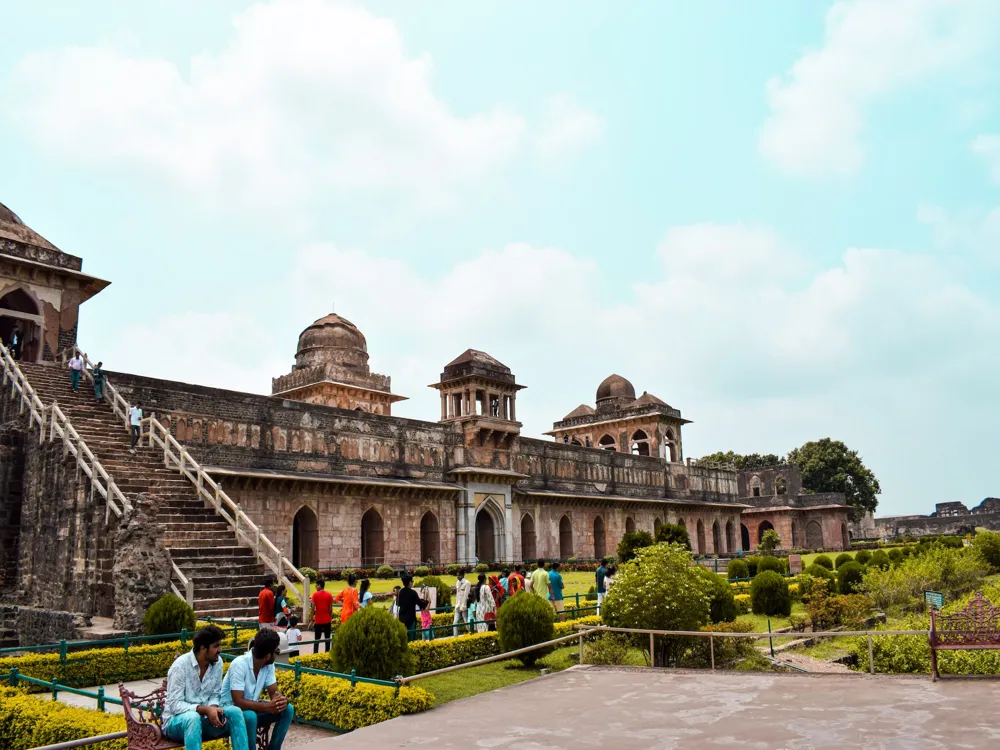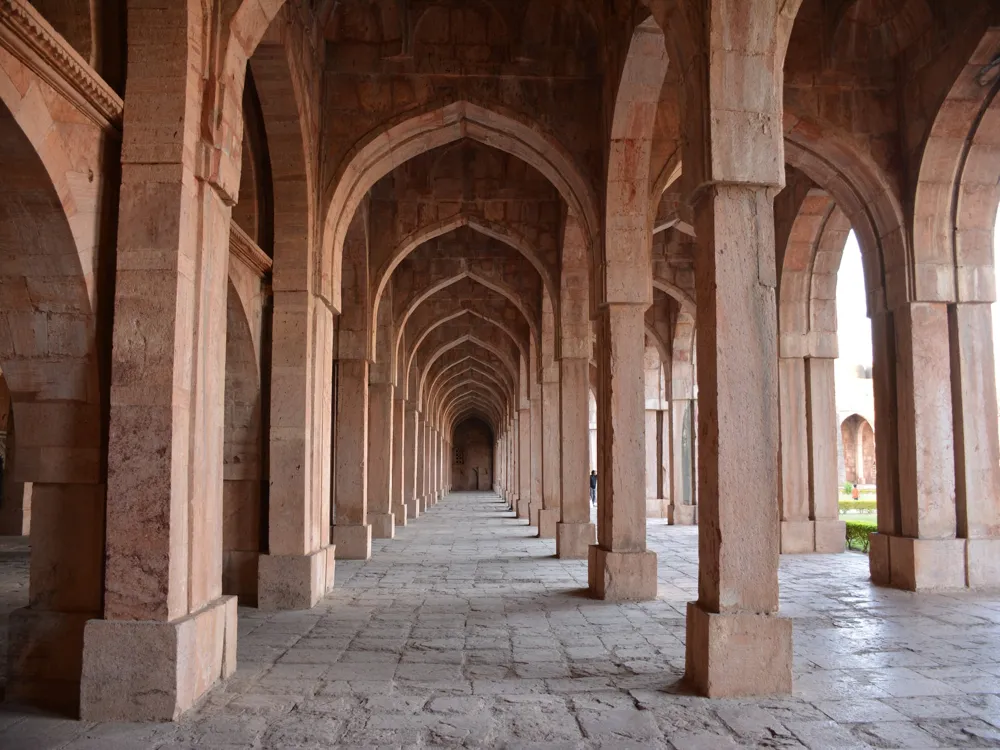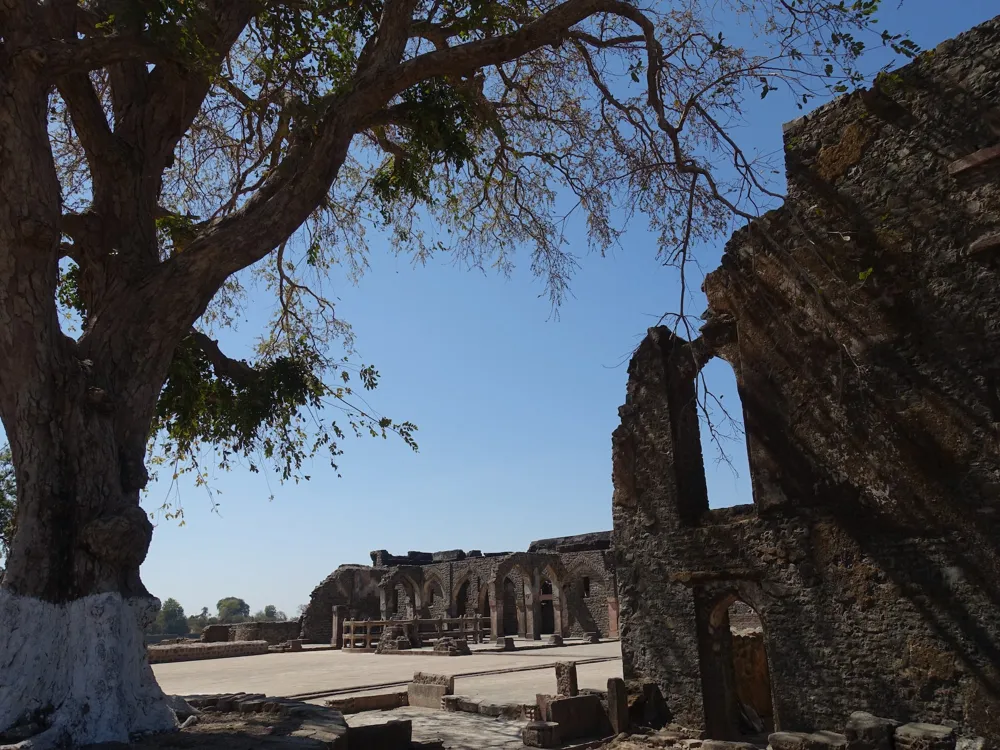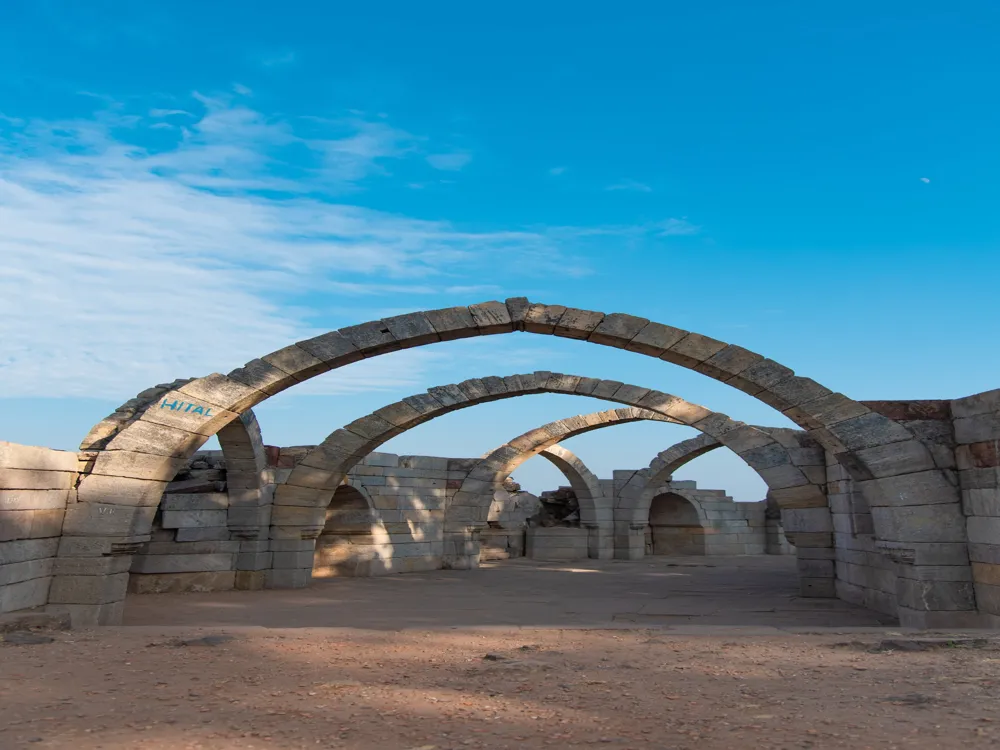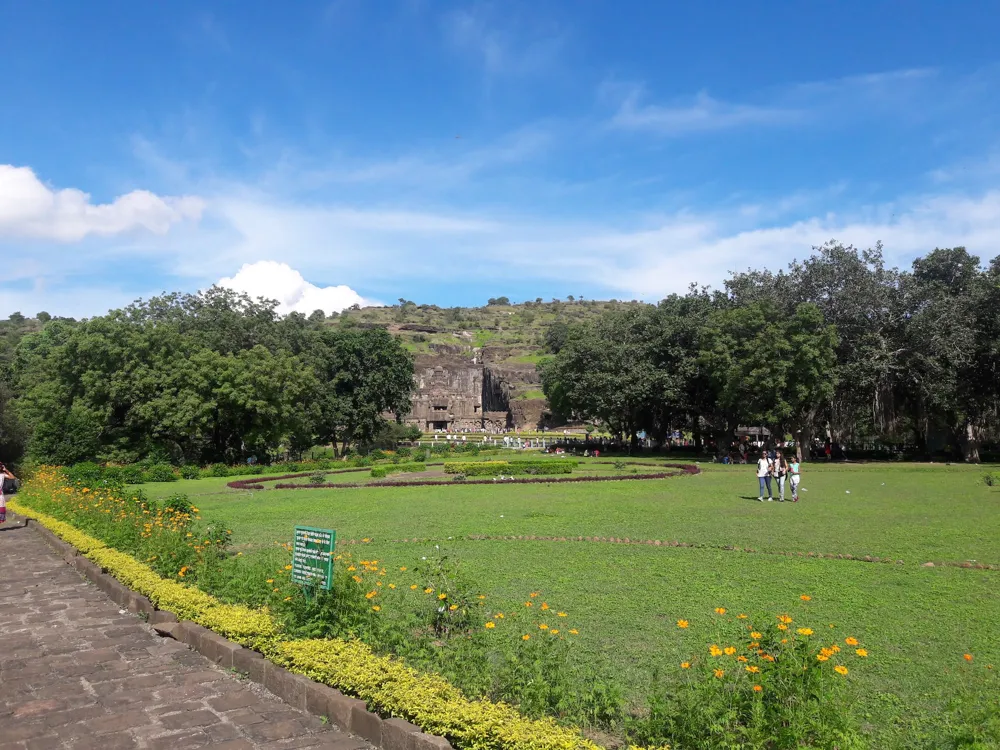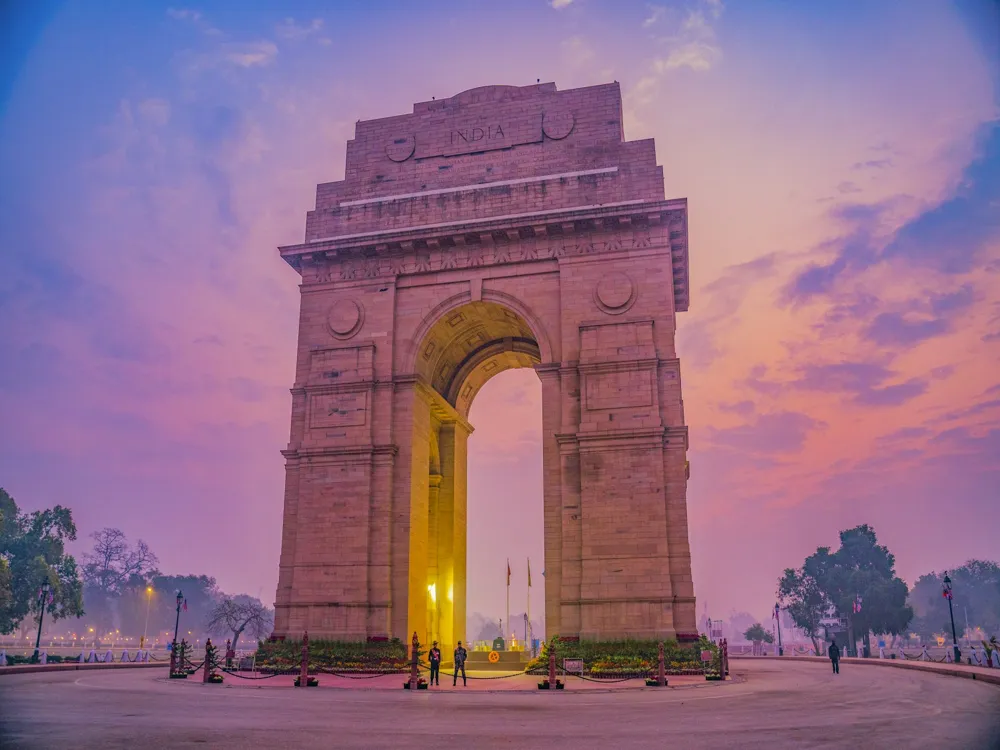Plan Your Travel To Mandu
Places To Visit In Mandu
Hanuman Dhoka
Once the royal palace of Malla kings and Shah dynasty, Hanuman Dhoka is a complex of ancient structures with some as old as mid 16th Century. Located in the Darbar Square of Kathmandu, it is locally known as Hanuman Dhoka Darbar, the name of which is derived from an antique idol of Lord Hanuman near the main entrance of an ancient palace. 'Dhoka' means door in the local language. Spread over an area of 5 acres, Hanuman Dhoka was severely destroyed during the earthquake in 2015.
Read More
Indra Chowk
Indra Chowk is a bustling maze of streets in Kathmandu that tourists can witness. Located on the India-Tibet trade route, it is a bustling commercial and ceremonial area having many shops where the local traders sell fresh regional produce. The moving crowds, the colourful shops and the sounds of this bustling marketplace are unique to Nepal. Observe the carved doors and windows of the shops and houses or just grab of Lassi. During the festive season, Indra Chowk becomes a ceremonial place, and several religious processions go through it.
Read More
Jagannath Temple Kathmandu
Jagannath Temple, located in the very famous Kathmandu Darbar Square, is most famous for its architecture and religious significance. One thing that draws tourists in large numbers is the exquisite erotic carving all over the structure. It was built in the early 16th century during the reign of King Mahendra of the Mala dynasty and is one of the oldest shrines in the city. From what remains now, one can get a gist of how fascinating the structure would have been. It is a two-storey building raised over a platform and built in the traditional pagoda-style architecture mostly made of wood and bricks. Some parts of the temple were damaged in an earthquake in 2015. However, some portions have been restored and open for the tourists to explore.
Read More
Kaiser Library
Kaiser Library or Keshar Library is located in Kathmandu's Kaiser Mahal, containing over 45,000 books from the personal collection of the Field Marshal Kaiser Shumsher Rana. It was established in 1969 and has a wide range of books covering subjects including history, law, art, religion, philosophy, etc. It was as a famous tourist attraction, but after Nepal was struck by an earthquake in 2015, the library took a major hit. Although the ground floor has been restored and opened to the public, the grandeur of the place is more or less lost. One may still visit to check out the collection of books and artefacts that were recovered and restored.
The library originally had gorgeous wooden furniture, antique decor with mirrors, portraits, statues, taxidermied animals and weapons on display. It had two floors with huge windows to let enough light and air come in. The seating was well planned with dark wood tables, and chairs and all the books were stacked beautifully in wooden racks. What remains now is just the ground floor with the recovered collection stacked haphazardly. There is very little space for readers to sit down and read one of the works of literature, but visitors can borrow some books from the library. The recovered collection has some rare books, first editions and some about a thousand year old. Outside the library is an enchanting garden with fountains, verandas, pavilions, a lotus pool and birdhouses which quite resemble the Edwardian Gardens.
Read More
Kala Bhairav Kathmandu
Kala Bhairav is a grand temple located at Kathmandu Durbar Square in the religious complex of Hanuman Dhoka, dedicated to a fierce manifestation of Lord Shiva. In this form, the lord is depicted carrying the decapitated head of Shani, wearing an ornamental snake, tiger skin, and a ritual apron made of human bones. The place of worship is an open-air area in the complex and has a gigantic 12-foot tall idol of Kala Bhairav sculpted in the 6th century and is regarded as the largest in the world. The idol and the structures that surround it are made of stone and were carved in the 5th century. It was discovered by King Pratap of the Malla dynasty amidst paddy fields in the 17th century.
Back in the time, people believed that anyone who would lie down in front of the idol would attain freedom from their lives. This may not be necessarily true. However, locals still continue worshipping this grand and fierce incarnation of Lord Shiva with all their devotion. Kala Bhairav is the terrifying avatar of Lord Shiva who is also called the Lord of Time and Death. He is worshipped by the Hindus as the guru of Lord Shani who is ruled by the planet Saturn and as Manjusri, Heruka, Yamantaka, and Vajrabhairava in Vajrayana Buddhism. The idol of Kala Bhairav is seen standing in a violent form, stepping over a dead body holding a decapitated head in one hand.
Read More
Kathesimbhu Stupa
Located in the heart of Kathmandu, the Kathesimbhu Stupa is famous for being the copy of the Swayanbhunath Temple. The courtyard, also called the Swayambhunath Complex, is quite a surprise when tourists find it while exploring the region. It comprises of a stunningly grand 16th-century stupa installed in between smaller stupas. The entrance is marked by a concrete gate, and there are no compound walls to the attraction.
The stunning Kathesimbhu Stupa at the centre has a white dome built on a pedestal with a shikhara kind of a structure on the top in gold. The topmost part has something that resembles tassels and is adorned with strings of prayer flags tied from the buildings that surround the dome to the top centre of the stupa. The smaller stupas have beautiful carvings of Gautama Buddha sitting in a meditative posture. There are two temples at the square, one of which is dedicated to the Goddess of smallpox, Hariti while the other is the Drubgon Jangchup Choeling Monastery.
Read More
Kathmandu Durbar Square
Kathmandu Durbar Square. The place which has witnessed and received one king after the other as they sat and ruled over Nepal a long time ago, where new rulers were crowned while the steady beats of drums and trumpets filled the place. The regal Kathmandu Durbar Square is one of the three durbar squares in the country. Till date, the place remains the most remarkable legacy of Kathmandu's traditional architecture. Even though the unfortunate earthquake of 2015 took its toll on the building and around half a dozen places within the premises collapsed, it has still retained its original glory. Three squares - A former elephant stable Basantapur square, main Durbar square on the west and another part of Durbar Square that houses the entrance to Hanuman Dhoka which are loosely connected make up the Durbar Square area.
While the southern part of the complex houses the open Basantapur Square area, the main Durbar square area occupies the western portion. For many years, the former used to be stable which housed royal elephants. Today, it is a site which houses souvenir stalls. In the northeast part of the complex runs the second part of the square. In this area, the entrance to the glorious Hanuman Dhoka Complex is planted, with a beautiful assortment of temples nestled behind it. The place is an active walkway which connects many streets together for the general public. Even though the durbar is no longer used for coronations, it is thronged by people during festivals like Dashain, Indra Jatra, Machhindranath Jatra, and Gaijatra. The entire Durbar Square complex was gazetted as a World Heritage Site by UNESCO in 1979.
Source
Read More
Kopan Monastery (Kapan)
Located on the picturesque Kopan Hills (20 minutes drive from the city centre) on the fringes of Kathmandu, Kopan Monastery is a stunning Tibetan Buddhist Monastery established between the late 1960s and early 1970s by the founders of the Foundation of the Preservation of the Mahayana (FPMT). It is a well-known tourist attraction and draws people who are interested in learning Tibetan Mahayana Buddhism. One can choose to enrol in a short-term (7 days) course to get a gist of this ancient way of living. The facilities are humble but ensure that everyone leaves feeling calm and composed.
Visitors may choose to explore the picturesque and tranquil monastery for a few hours, do a retreat or join one of the courses. The monastery campus is open for all. However, a general code of conduct needs to be maintained to avoid disturbing the students and the monks. They have a cafe where tourists can have a simple and wholesome vegetarian meal before taking a nice long stroll in the monastery gardens. Everyone is welcome to witness the peace even if it is just for an hour.
Read More
Kumari Bahal
Kumari Bahal, the palace where the Kumari lives while she is the chosen Devi, is a beautiful ancient palace. It is a three-story traditional structure made of wood and red bricks with intricately carved windows, doors, and balconies which quite resemble a Buddhist Vihara. This structure was built in the mid-1700s by Jaya Prakash Malla and also houses a stupa with symbols of Goddess Saraswati and a huge chariot that is used to take the Kumari around the city during the annual festival of Indra Jatra.
The presence of Kumari is believed to protect the community and the region. In fact, the major earthquake that hit Nepal in 2015 left only minor damage on the Bahal while the surrounding was impacted majorly. This is said to be some kind of a sign that locals believe is the grace or the power of the Kumari.
Read More
Langtang National Park
With trekking trails, lush greenery, and a variety of species of flora and fauna, the Langtang National Park is the fourth national park that was established in Nepal in 1976. The Langtang National Park is situated at an approximate distance of 32 kilometres to the north of the capital city of Kathmandu and is connected to the Qomolangma National Nature Preserve in Tibet.
The picturesque park is also home to the serene, high altitude Gosaikunda Lake, which is believed to be sacred. From the dense forests which comprise the hilly areas, the area of the park spreads across the Nepalese larch in the middle before cascading down to the vast meadows of green grasslands. With more than 250 species of birds, around 46 species of mammals, and a whopping 1000 species of plants, this place is ideal for nature enthusiasts.Sprawled across an area of 1710 square kilometres in the Rasuwa, Nuwakot, and the Sindhupalchok districts, the park encompasses 26 Village Executives and is perched at an altitudinal range of 6450 metres above sea level. The peak of the gigantic Langtang Lirung, at an altitude of 7245 metres, is the zenith of the park. The numerous trekking tracks, each differing in its level of difficulty from the other cater to those who come here seeking adventure. While the international boundary of Tibet coincides with the borders of the park in the north and east, the western border follows the gushing rivers Trisuli and Bhote Kosi. The protected area within the park is representative of both the Palearctic and Indo-Malayan ecozones, which houses a rich and vast biodiversity.
Source
Read More
Mandu Travel Packages
View All Travel Packages Mandu
Nearby Places Mandu
Browse Package Collections
Browse Hotel Collections

